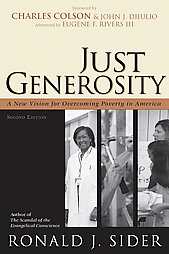 Below are excerpts from chapter one that create something of an outline. This first chapter simply describes the problem, gives us an idea of what poverty looks like in the United States, so there is little to critique here. I'll just let the author speak for himself.
Below are excerpts from chapter one that create something of an outline. This first chapter simply describes the problem, gives us an idea of what poverty looks like in the United States, so there is little to critique here. I'll just let the author speak for himself.Mention poverty and many people in the
Thirty year ago, half the poor lived in rural areas. Today, only twenty-five percent do. Poverty is growing fairly rapidly in the suburbs (especially the inner suburbs) where thirty-three percent of the poor now live. Only twelve percent of the poor live in urban ghettos—defined as an area in which at least 40% of the residents are poor.
What Causes Poverty?
Structural Causes
Decreasing Number of Low Skilled, Well-paying Jobs (Factory Jobs)
Falling wages - including the buying power of the minimum wage.
The structure of welfare and it's ability to help someone out of poverty.
Racism
Personal Decisions and Misguided Behavioral Patterns
An Increase in the Number of Single-Parent Families
Illegal Drugs and Alcohol
Sudden Catastrophes
Accidents and illness leading to permanent disabilities, especially to the primary bred-winner.
Medical bills in the hundreds of thousands of dollars that can not be paid.
Consider the Distribution of Income and Wealth
In 1974 the bottom 20% of the population received only 5.7% of the total national income, while the top 20% enjoyed 40.6%. In the next 20+ years, and inequality became worse. The bottom share dropped to 4.2% while the top share expanded to 46.8%.
Nor is it just the poor who are seeing their share of income decline. From 1979 through 1997 only the top 20% saw their share of income grow. Everyone else, the other 80% saw their share of income fall.
In 1965, CEO’s made approximately 44 times the salary of the average factory worker. Thirty years later the CEO received 209 times the average factory workers salary.
Conclusion
Poverty is alive and well in the
The rest of this book offers a comprehensive vision of how a committed movement of people with the Judeo-Christian perspective can dramatically reduce agony and injustice by offering the poor genuine opportunities to work their way out of poverty.
No comments:
Post a Comment